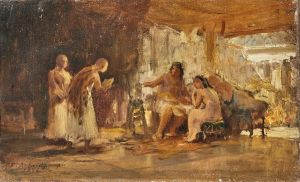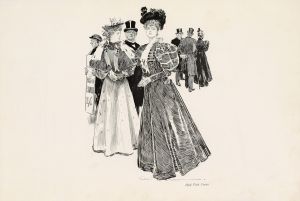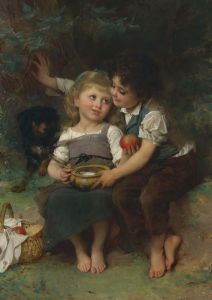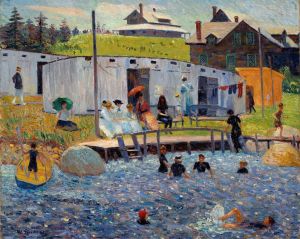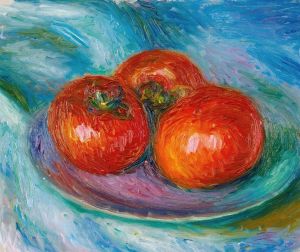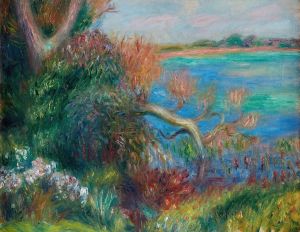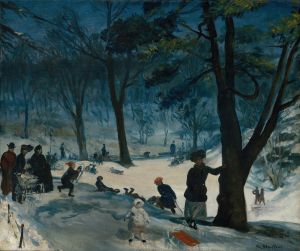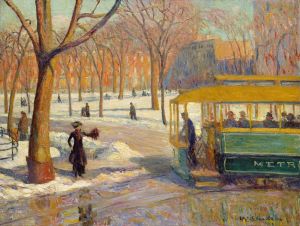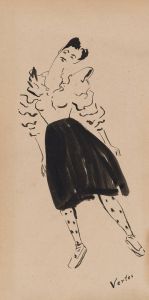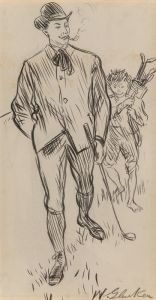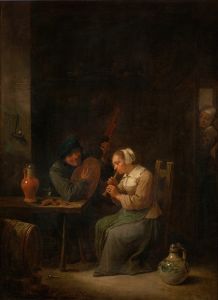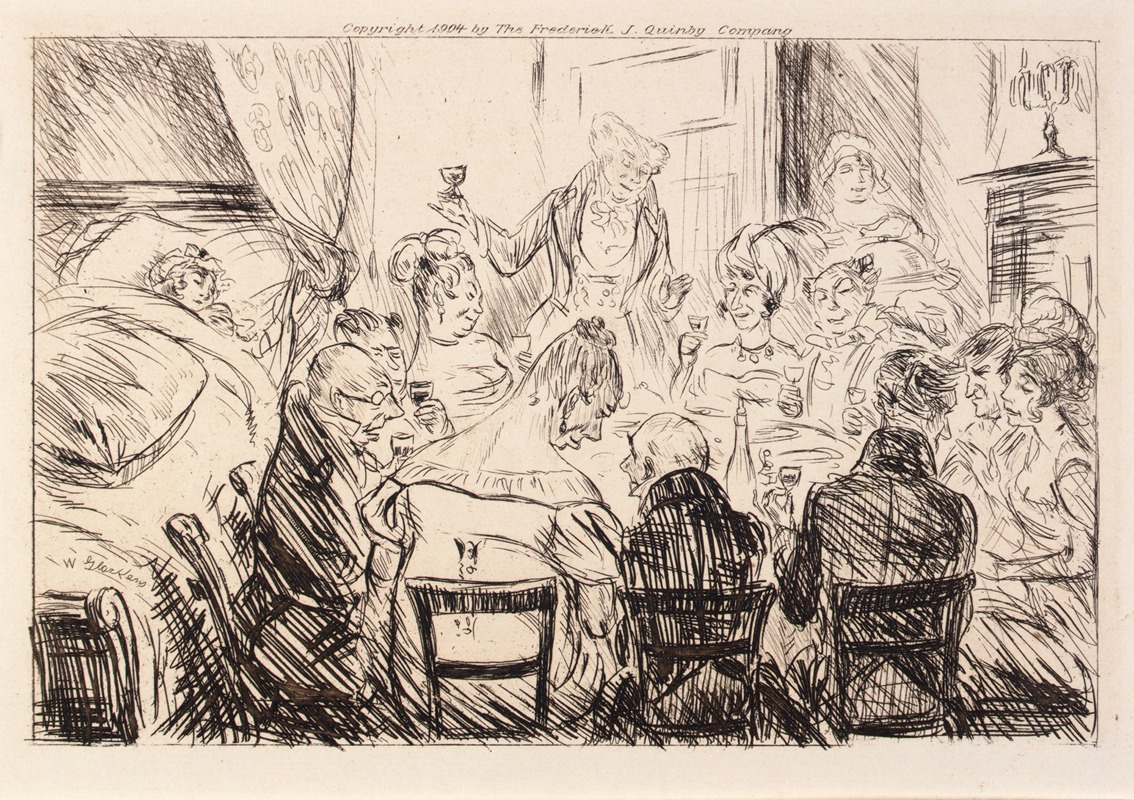
Nothing Was Heard but the Clatter of Plates and Forks
A hand-painted replica of William James Glackens’s masterpiece Nothing Was Heard but the Clatter of Plates and Forks, meticulously crafted by professional artists to capture the true essence of the original. Each piece is created with museum-quality canvas and rare mineral pigments, carefully painted by experienced artists with delicate brushstrokes and rich, layered colors to perfectly recreate the texture of the original artwork. Unlike machine-printed reproductions, this hand-painted version brings the painting to life, infused with the artist’s emotions and skill in every stroke. Whether for personal collection or home decoration, it instantly elevates the artistic atmosphere of any space.
"Nothing Was Heard but the Clatter of Plates and Forks" is a painting by the American artist William James Glackens, a prominent figure in the Ashcan School of early 20th-century American art. Glackens, born in 1870 in Philadelphia, Pennsylvania, was known for his vibrant and dynamic depictions of urban life, often capturing the bustling energy of city scenes and the everyday activities of its inhabitants.
The painting "Nothing Was Heard but the Clatter of Plates and Forks" exemplifies Glackens' interest in social realism and his ability to portray the lively atmosphere of social gatherings. The title itself suggests a scene filled with the sounds of dining, emphasizing the communal and convivial nature of the setting. This work is characteristic of Glackens' style, which often included rich, vivid colors and a keen attention to detail, bringing to life the textures and movements within his compositions.
Glackens was a member of "The Eight," a group of American artists who challenged the conservative art establishment of their time. Alongside artists like Robert Henri, John Sloan, and George Luks, Glackens sought to depict the realities of modern urban life, moving away from the idealized subjects that dominated the art world in the late 19th century. "The Eight" were instrumental in the development of the Ashcan School, which focused on portraying the grittier aspects of city life with honesty and immediacy.
In "Nothing Was Heard but the Clatter of Plates and Forks," Glackens captures a moment of social interaction, likely set in a restaurant or a dining room. The painting reflects his fascination with the social dynamics of the time, highlighting the interactions between individuals in a shared space. The use of light and shadow, as well as the careful rendering of the figures and their surroundings, showcases Glackens' skill in creating a sense of depth and realism.
Glackens' work was influenced by his travels to Europe, where he was exposed to the works of the Impressionists and Post-Impressionists. This influence is evident in his use of color and his loose, expressive brushwork. However, unlike the Impressionists, who often focused on the fleeting effects of light and atmosphere, Glackens was more concerned with capturing the essence of human activity and the vibrancy of urban life.
Throughout his career, Glackens remained committed to depicting the world around him with a sense of immediacy and authenticity. His paintings, including "Nothing Was Heard but the Clatter of Plates and Forks," offer a window into the social fabric of early 20th-century America, providing a glimpse into the everyday experiences of its people.
Today, William Glackens is remembered as a key figure in American art history, and his works continue to be celebrated for their lively depictions of urban life and their contribution to the development of modern American painting. "Nothing Was Heard but the Clatter of Plates and Forks" stands as a testament to his ability to capture the energy and spirit of his time, making it a significant piece within his oeuvre.





